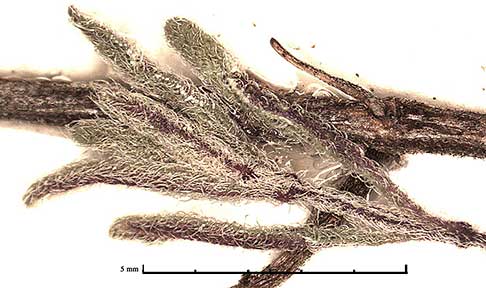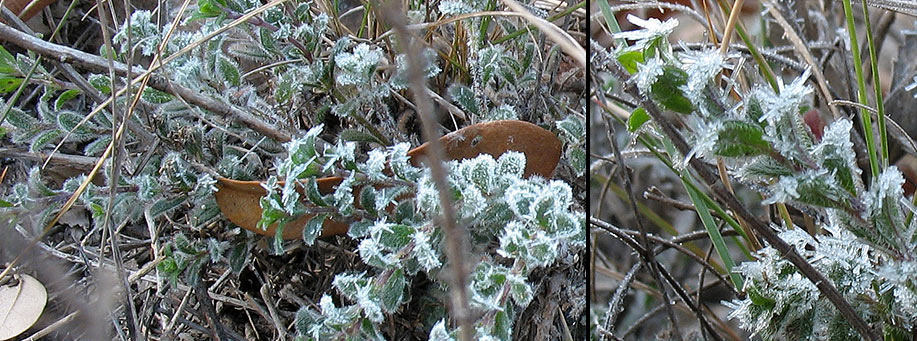
H. reverchonii var. serpyllifolia, winter leaves, 31 Jan. 2013 [Hays Co.]


As early as October in Central Texas plants of the Hedeoma drummondii complex develop clusters of villous shoots at the base of stems which have lost their lower leaves (but which still have leaves and flowers higher up)[for October images]. These shoots continue to develop through the winter months, often forming dense clumps.
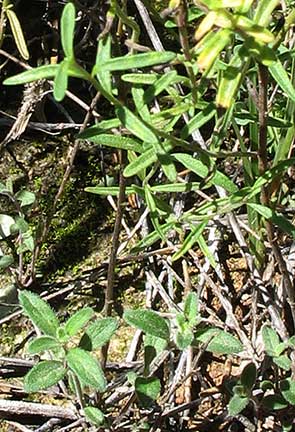
14 Oct. 2010, Hays Co. |
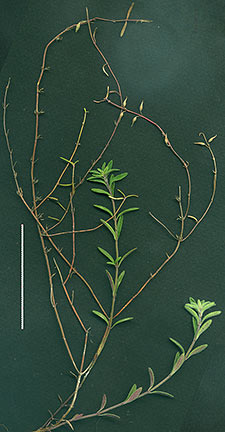
12 Dec. 2012, Travis Co. |
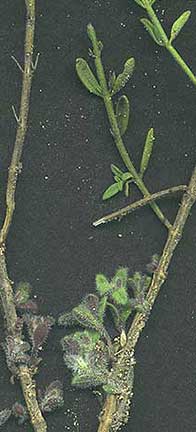
8 Oct. 2012, Travis Co. |
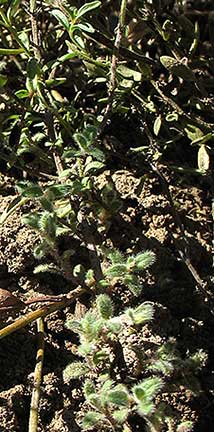
16 Oct. 2010, Hays Co. |
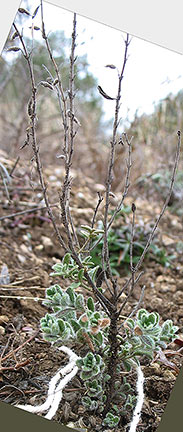
26 Jan. 2013, Hays Co. |
|---|---|---|---|---|
| H. drummondii | H. reverchonii var. reverchonii | H. reverchonii var. serpyllifolia | ||
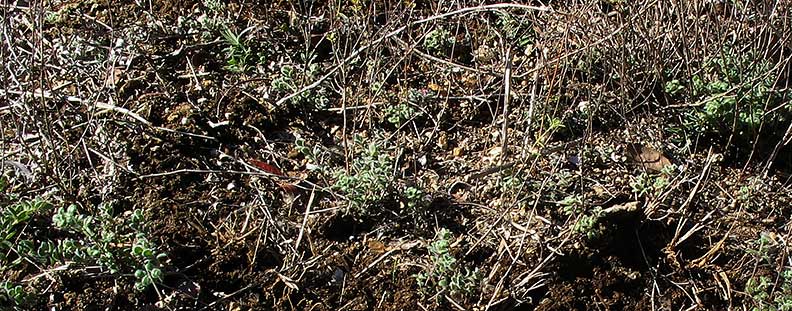
The fall/winter (perhaps ‘cold–season’ would be a more appropriate term) shoots differ in several respects from those in the regular growth season.
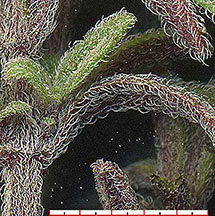
23 Dec. 2012, Travis Co. |
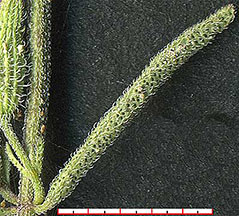
12 May 2012, Hays Co. |
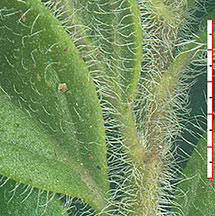
23 Jan. 2013, Hays Co. |
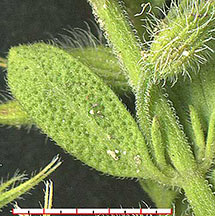
12 May 2012, Hays Co. |
|---|---|---|---|
| H. drummondii | H. reverchonii var. serpyllifolia | ||
| H. drummondii | H.r. var. serpyllifolia | H.r. var. reverchonii | |
|---|---|---|---|
| Upper surface |
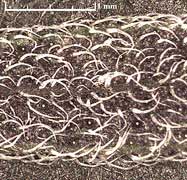
|
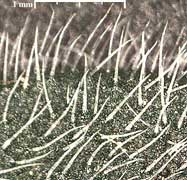
|
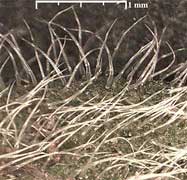
|
| Lower surface |
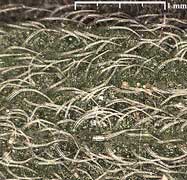
|
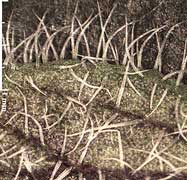
|
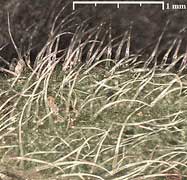
|
| longest hairs | 0.45—0.55 mm | 0.7—0.95 mm. | 0.8—1.1 mm. |
| typical hair density per sq. mm1 |
33—36 | 13—22 | 24—31 |
| orientation: leaf | curved in upwards | spreading | |
| orientation: stem | curved in downwards | ||
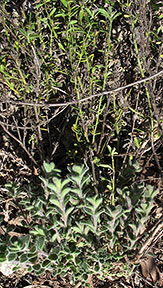
H. reverchonii var. serpyllifolia, 14 Nov. 2012, Hays Co. |
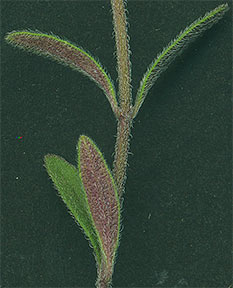
H. drummondii, 2 Dec. 2012, Travis Co. |
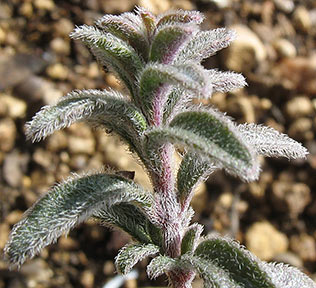
H. drummondii, 11 Jan. 2013, Travis Co. |
|---|
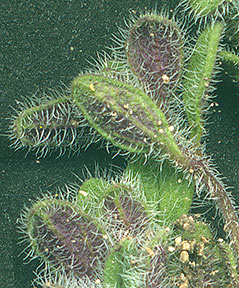
H. reverchonii var. reverchonii, 8 Oct. 2012, Travis Co. |
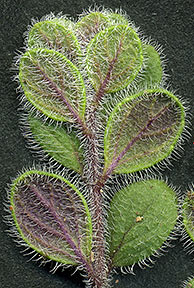
H. reverchonii var. serpyllifolia, 20 Jan. 2013, Hays Co. |
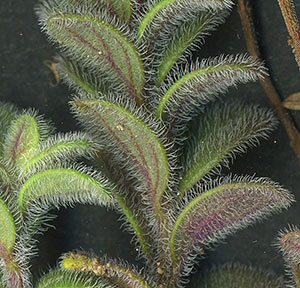
H. reverchonii var. serpyllifolia, 28 Nov. 2012, Hays Co. |
|---|
This same color shift occurs with even greater consistency with fall/winter foliage of the annual Hedeoma acinoides:
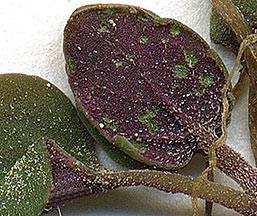
21 Oct. 2012, Hays Co. |
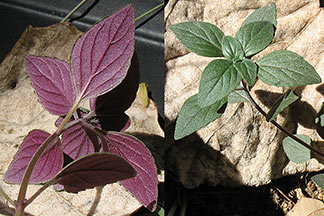
5 Dec. 2012, Hays Co. |
|---|
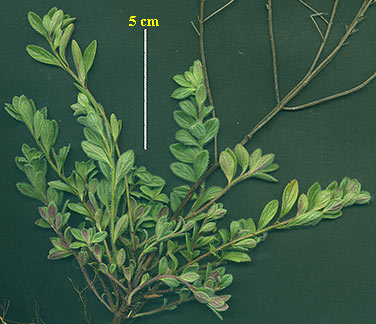
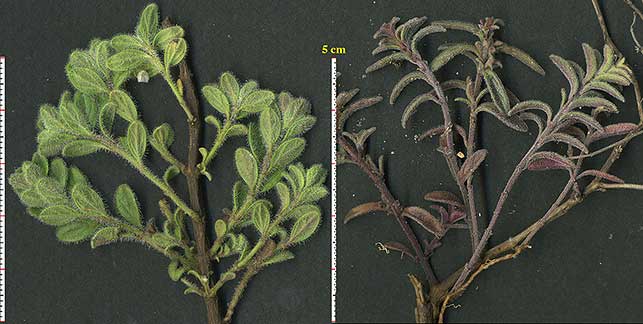
Leafs at the stage with longest hairs most clearly reveal the differences among the 3 taxa with regard to number of glands. H. drummondii shows very little difference between winter and summer leafs, with both surfaces covered with glands. At the other extreme is H. r. var. serpyllifolia, which has many fewer winter glands, often none on one or both surfaces: the leaf below, with 3 glands on an upper surface is matched with a lower surface with no glands (click to see that surface). And H. r. var. reverchonii seems to be in between, but never with as many glands as H. drummondii. [Note the hairs at maximum length in all 3 images below.]
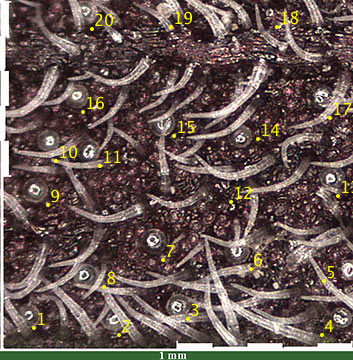
|
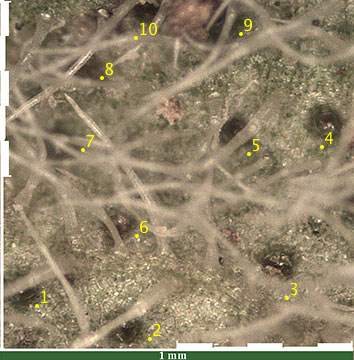
|
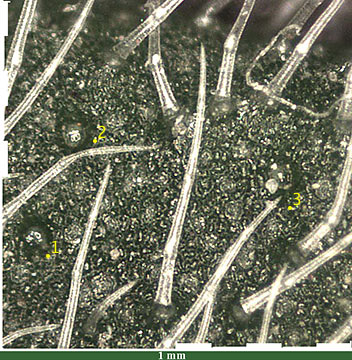
|
|---|---|---|
| H. drummondii | H. r. var. reverchonii | H. r. var. serpyllifolia |
A significant effect of age as well as cold on monoterpene development in H. drummondii was determined by D.H. Firmage & R.S. Irving 1979 and D.H.Firmage 1981. The latter found:
The total oil/mg fresh weight in the cold–treated plants decreased from that in the control conditions. (p. 54)
Late in summer, apparently after summer rains, sprouts may occur at the base of the plant, the leaves of which are densely villous.... (p. 36)
Although it is difficult to evaluate their specific observation, my own observations do not support their suggestion that the fall/winter shoots resulted from rainfall. I first noticed and documented this phenomenon in mid October 2010, a period of extreme drought. There was no significant rainfall after Sept. 9, no rain at all in October 2010. Wikipedia notes:
From October 2010 through September 2011, Austin had the least rainfall since the 1950s. This was a result of La Niña conditions in the eastern Pacific Ocean where water was significantly cooler than normal.And the very same plants have produced shoots at the base of the stem in October of 2011 & 2012, which have persisted through early spring. The apparent mystery regarding seasonal dimorphism may in part stem from the tendency to base studies on herbarium materials (as noted by Epling & Stewart) together with the general lack of fall and winter collections of plants not in bloom. TEX/LL herbaria have 442 collections of the H. drummondii complex, but only 16 from the period October—February, most from October with plants in bloom. I was able to inspect 15 of these (one not locatable) and all 15 specimens exhibited the winter dimorphism described here. Moreover, there were 12 cold season collections for the western H. mollis, H. nana & H. plicata, and these too had basal shoots with greater pubescence and slightly different form.
Later, R.S. Irving, in his excellent 1968 dissertation, seems to focus solely on ontogenetic rather than seasonal differences, noting a different form of ‘juvenile’ leaf — but he does not clearly develop ontogenetic aspects of his study:
[as a feature of all Hedeoma species, p. 10]
In all species the juvenile foliage is smaller than the adult. In a number of taxa the juvenile leaves are also markedly different in pubescence, shape, and margin features.[Note: It is unclear whether Irving's use of ‘juvenile’ was intended to include the seasonal forms noted here. He did work with greenhouse materials and he obviously did observe actual juvenile development. But he also both contributed and annotated October collections with basal formations. As to size, his comment is accurate for the emerging winter leaves in those October collections he examined. But it does not correctly describe later growth of the seasonal leaves, which increase in size over the winter, often exceeding the size of residual fall leaves in the upper branches.][within the H. drummondii complex]
The initial or juvenile leaves of the plants are densely hirsute pubescent. (p. 150)[Note: It is unclear whether ‘or’ here implies a distinction between ‘initial’ and ‘juvenile’ or does it equate the two terms.]Juvenile foliage densely and evenly villous pubescent, otherwise a diminutive of adult. (p. 258)
[Note: This would not be correct as concerns the relationship between adult and winter leaves. Nor is it correct for the first true leaves of seedlings. For a greenhouse seedling.]
On one of his October collections (R.S. Irving 739, Oct. 1, 1966, Travis Co.) with winter leaves (shown below) — which I would consider a perennial feature — he notes: "Plants typical Drummondii but seemingly annual here." This would seem to support the view that he considers the October growth to be ‘juvenile’ rather than seasonal.
